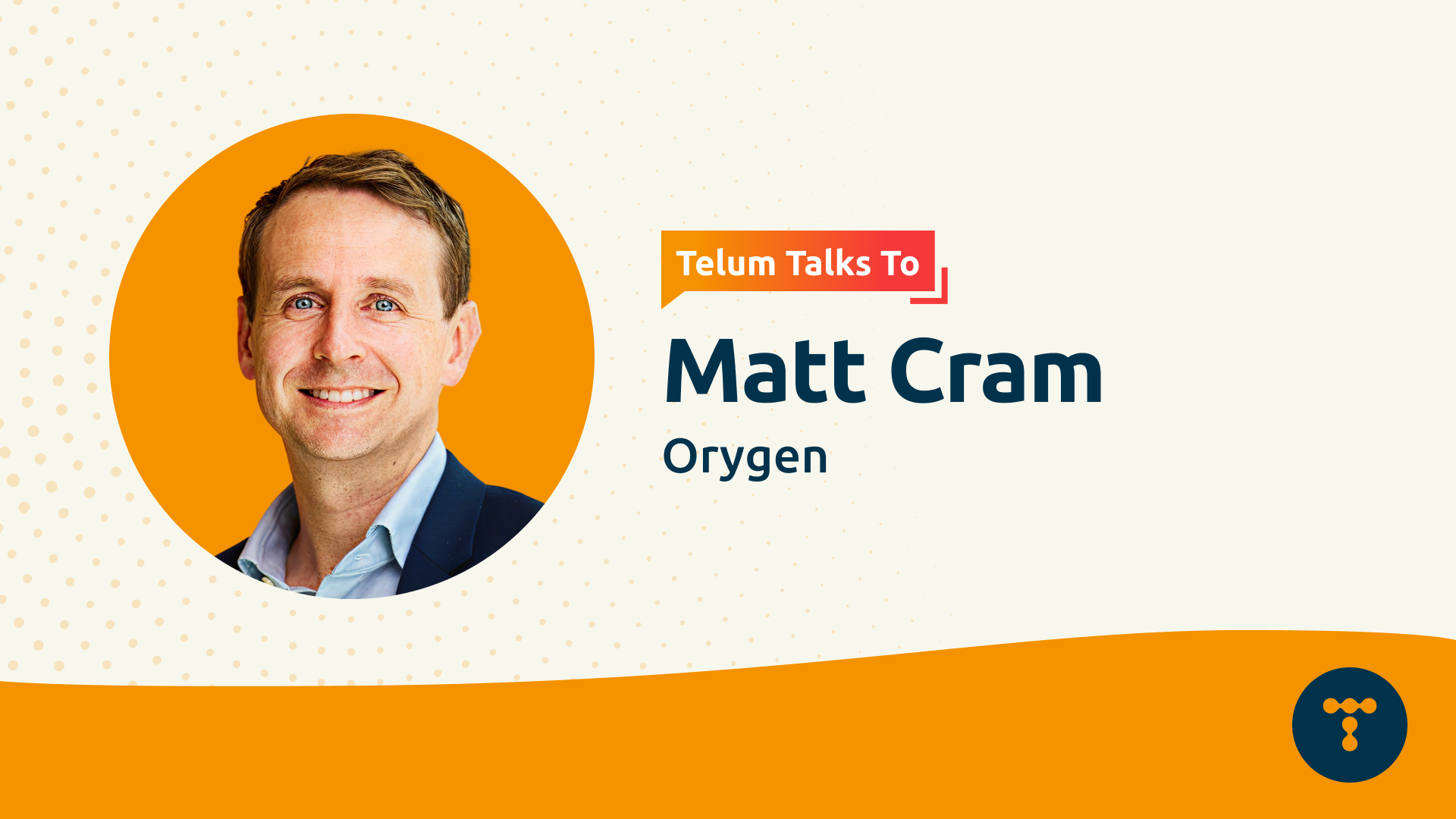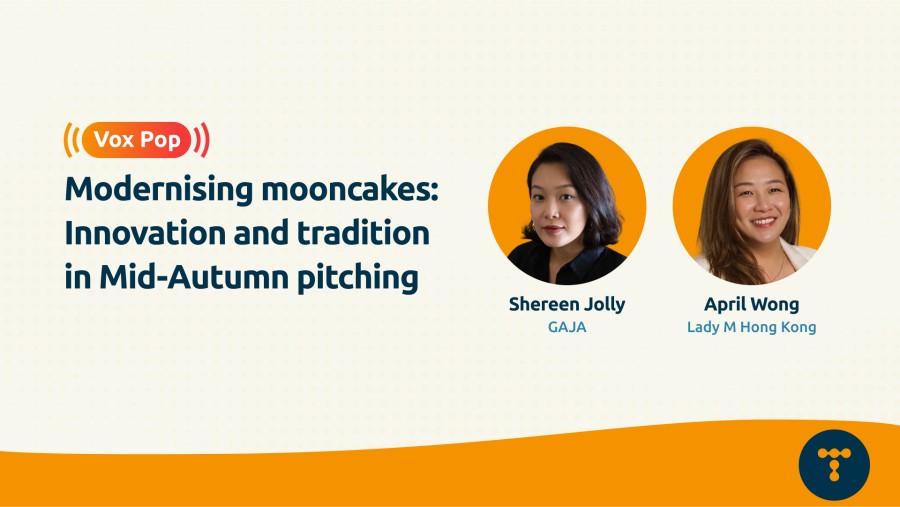Crystal Chow has taken on a new appointment as Vice President, Corporate Communications APAC at BlackRock. Based in Hong Kong, she is responsible for driving communications for various business segments.
Crystal started her comms career with Finsbury, where she worked with financial services clients including BlackRock. After nine years, she exited as a Director of FGS Global and moved in-house at FWD Group, where she managed the group's corporate communications and was part of the insurer's Hong Kong IPO.

Moves
BlackRock welcomes new VP for APAC corp comms
by Telum Media
6 October 2025 7:41 AM
1 min read
Telum Media creating connections
Get in touch to learn more
Previous story
Telum Talks To: Matt Cram from Orygen
You might also enjoy
Feature
In today’s ‘always-on’ information economy, the use of AI tools in mental health conversations is becoming increasingly evident, influencing how healthcare communicators engage, educate, and advocate for wellbeing services.
Telum Media spoke to Matt Cram, Head of Media and Communications at youth mental health institute, Orygen, to explore how AI algorithms are affecting mental health narratives, shaping the value of traditional media, and being leveraged for more trusted, accessible, and impactful mental health discussions.
How is the 'always-on' information economy reshaping the way healthcare communicators approach mental health narratives?
In an always-on world, stories about anything, including health, can take off and change shape in minutes. That can be exciting, but it also raises the stakes. We need to keep accuracy and clarity front and centre, and move quickly without feeding misinformation. Balance is important - being responsive without losing responsibility and being agile, while keeping messaging clear and concise.
What hasn’t changed are the building blocks of good communication: case studies, lived experience stories, and strong evidence, these are still what resonate with audiences. If anything, they’re even more important now because they anchor our messages when conversations are moving so fast.
And while the information economy is always on, our brands don’t need to mimic that. This was one of the big lessons in my move from journalism to health communications. We need to be 'always on' in terms of listening and monitoring, but we don’t need to be constantly talking. If you try to fill every moment, you risk becoming part of the noise. Choosing when to show up - and making sure you actually add value when you do - is what keeps your voice trusted and impactful.
How is AI changing the role of earned, traditional, and regulated media in mental health communications - both in terms of amplifying their value and potentially undermining it?
Earned and traditional media still matter enormously. Many AI algorithms are trained on, or fuelled by, this content. When your message lands in a credible outlet, it’s not just reaching readers and viewers, it’s also feeding the machines that will repackage and serve that information to new audiences. All the more reason to make sure what you put out is accurate and on message.
At the same time, AI is blurring the line between what’s legitimate and what’s confected. That risk only makes trusted voices more valuable. When people are swimming in AI-generated noise, established, regulated media serve as touchstones of credibility.
On the flip side, AI has made the creation of strong digital content easier and more accessible than ever. That’s a warning shot to traditional media: if they don’t keep evolving their relevance and depth, they risk being bypassed by brands and organisations, who can now publish credible content directly to audiences.
And of course, it’s all moving so fast that some of what I’ve just said could be obsolete within a month - that’s how quickly the landscape is shifting.
As AI becomes more embedded in healthcare comms, particularly around mental health, what strategies have you adopted to preserve the human empathy and tone that are essential for building trust?
AI can be a useful support tool, but it can’t replace the way people connect through empathy, creativity, and lived experiences. When everything starts to sound the same, when outputs drift toward homogeneity, that’s exactly when distinctive human voices stand out most. The stories that cut through are the ones only a person could tell - with warmth, context, and care.
For me, it’s about using AI in the background rather than the foreground. It can help with brainstorming and sense-checking, but there’s always a human review before anything goes out - especially in mental health, where tone and nuance really matter.
And the other piece is making sure lived experience is central in your messaging. That’s not something you can outsource to an algorithm. The empathy and authenticity that come from people sharing their realities are irreplaceable and keep trust at the heart of all communications - from the PR to the mental health training and resources our organisation delivers for young people, parents, and clinicians.
What practical strategies can healthcare communicators use to influence generative AI and search to ensure that credibility, accuracy, and public interest are prioritised?
One of the biggest things we’ve learned is that AI doesn’t just surface information, it consumes it. That means the way we structure and present content really matters.
Using plain language, clear evidence, and formats that AI can easily ingest helps ensure reliable information is what gets pulled through. In the Orygen communications team, we talk about ‘telling the internet who we are’. Every digital publishing opportunity adds to our footprint, so we find as many as we can and treat each one in a deliberate and unified fashion - another chance to show a consistent, credible brand.
Partnerships are just as important. Working with regulators, researchers, and health organisations makes it more likely that credible, well-sourced material is not only published but also picked up and prioritised. It strengthens both the signal and the source.
But again, if I read like I’ve got all the answers, I don’t. We’re all constantly learning here. The way AI and search behave is shifting so quickly that the best strategies today might look very different tomorrow, and that’s why one of the important tasks for communicators in 2025 is to constantly stay abreast of the latest trends and news in this space.
There’s truth in this saying: “AI isn’t coming for everyone’s job, it’s coming for the jobs of people who don’t know how to use AI.”
6 October 2025 7:27 AM
5 mins read
Ford Motor Company has named Matt Moran as Director, ASEAN Communications & IMG Product Communications. Relocating to Bangkok from Australia, he now leads Ford's ASEAN Communications teams across Thailand, Vietnam, the Philippines, South Korea and Asia Pacific distributor markets, as well as product communications across the rest of the International Markets Group, which also includes Australia, New Zealand, the Middle East and Africa.
With more than 15 years of industry experience, Matt most recently served as Communications Director, Australia and New Zealand at Ford Motor Company in Australia.
6 October 2025 7:19 AM
1 min read
Feature
As Mid-Autumn approaches each year, hospitality and F&B brands across Asia roll out their seasonal offerings, with mooncakes at the forefront. Whether it’s the decadence of the classic lotus seed paste or trendy flavours like strawberry matcha, these treats remain a signature symbol of the festival.
To explore the strategy behind mooncake marcomms, we spoke with comms specialists in Hong Kong's hospitality and F&B scene on brand alignment, audience fatigue, and pitching a fresh, decadent balance of tradition and modernisation in mooncake narratives.
How have PR efforts around the Mid-Autumn Festival evolved alongside public perception and observation of the tradition?
Shereen Jolly, Communications Director, GAJA
It’s moved from just selling a product to telling a story.
In a saturated market like Hong Kong, the Mid-Autumn Festival is a major gifting season. What stands out isn't the mooncake itself (though quality remains a key purchasing factor) but the narrative around it - the craftsmanship, the tradition, and the heritage. PR now taps into the deeper meaning of reunion, which resonates much more than a simple product push.
April Wong, Marketing Manager, Lady M Hong Kong
Over time, PR efforts surrounding the Mid-Autumn Festival have evolved to balance cultural appreciation with contemporary relevance. Traditionally, campaigns centred on symbolism, family reunions, and gifting, and highlighted the festival’s historical significance. As audiences became more diverse and socially conscious, strategies shifted towards more holistic, progressive approaches.
Today, campaigns go beyond merely reflecting contemporary values, such as product innovation, sustainability, and personalisation. They now also integrate traditional themes, like reunion and gratitude, with current social issues and individual experiences. This nuanced storytelling, along with influencer marketing, makes the festival - and brand - fresher and more relatable, particularly for younger audiences.
The move towards modern storytelling and utilisation of digital platforms and social media has propelled marcomms professionals to craft authentic, interactive narratives that can better resonate with diverse, global demographics.
What are your key strategies for preventing audience fatigue and keeping story pitches fresh year-on-year, especially with recurring seasonal products like mooncakes?
April: While seasonal products like mooncakes are traditionally associated with gifting, brands can strive to craft offerings that communicate their unique brand value and identity and appeal to broader audiences, including those seeking personal indulgence. Increasingly discerning and deliberate in their purchasing decisions, consumers value meaningful experiences and authentic narratives.
To stay relevant and fresh beyond mere commercialisation, brands can look to develop story-driven products that resonate and foster genuine audience engagement. Incorporating contemporary trends - such as health-conscious ingredients, sustainable packaging, and innovative fusion flavours - can further enhance appeal and make each year's campaign relevant, exciting, and aligned with evolving consumer preferences.
Shereen: We have to get creative. Collaborating with unexpected or like-minded brands, such as through mooncake pairings, can create a fresh buzz. Sustainability is also key; people are more conscious about gifting, so eco-friendly stories stick. Finally, focus on the experience, like mooncake making classes or reunion dinner promotions, to make the familiar feel new again.
In my work with a client, Saicho Sparkling Tea, we collaborated with Hong Kong restaurant, Duddell’s, to move beyond a traditional pairing. We centred the campaign on Saicho’s new osmanthus sparkling tea, launching it exclusively through Duddell’s mooncake gift sets ahead of its public release.
This was designed to create a sense of urgency and position the sparkling tea as a premium festive gift. We integrated this launch into Saicho’s wider global 'Art of Pairing' campaign, which featured Duddell’s Executive Chef, Chan Yau Leung, to create a Cantonese pairing menu featuring all of Saicho’s expressions throughout October.
Ultimately, we wanted to provide a timely Mid-Autumn hook, while extending into a longer-term culinary narrative focused on modern gatherings.
The F&B industry is driven by creativity. How can brand PR professionals deliver Mid-Autumn campaigns that showcase innovation while conveying cultural and traditional nuances?
April: With health consciousness a significant consideration for Hong Kong consumers, Mid-Autumn campaigns can benefit from exploring innovative flavours that cater to evolving preferences.
Incorporating modern twists - such as fusion mooncakes or contemporary packaging - while emphasising their roots in tradition can help create compelling narratives that balance innovation with cultural significance. Offering smaller, bite-sized versions can encourage tasting and experimentation, giving audiences a chance to enjoy various flavours.
Creative and novel approaches allow consumers to indulge in modern interpretations of traditional mooncakes, which remain a symbol of reunion and togetherness. For these seasonal products, marcomms campaigns can aim to balance innovation with cultural significance to create narratives that resonate deeply with audiences.
How can hospitality and F&B brands better integrate Mid-Autumn Festival messaging into their broader brand and narrative?
Shereen: Brands can use storytelling to fold the festival into their existing brand narrative rather than just bolting it on. The most effective way is to become a curator of the tradition.
Instead of just selling mooncakes, use them as a portal to the brand's world. The pitch isn’t “we have mooncakes”; it’s “experience how we celebrate reunion and heritage.” This frames the brand as the host of the celebration, deepening emotional connection far beyond a seasonal transaction.
6 October 2025 1:27 AM
5 mins read


